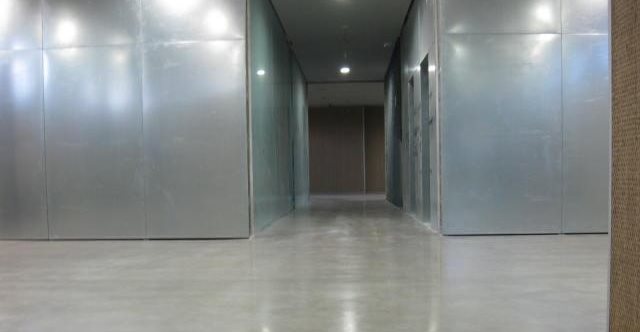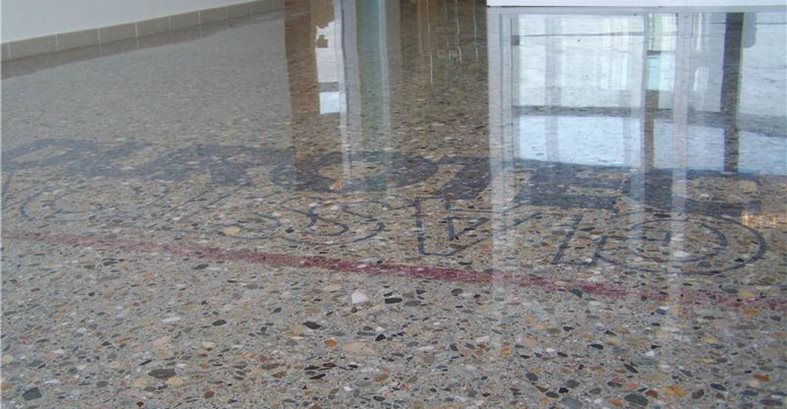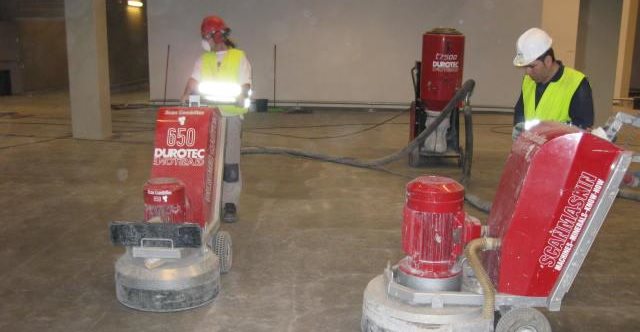Spain is filled with industrious, hard-working individuals who take great pride in their decorative concrete work. On a recent trip there I had a chance to work with one of these individuals, Toni Jimenez. When Toni is not jumping from airplanes or cycling around Europe, he is neck-deep in the polished concrete and stone industry.
Toni started in the diamond tooling industry six years ago, then branched out and started a concrete polishing company offering equipment sales and project execution. Toni is now involved in running a top-notch training facility in Almeria, Spain, called Durotec Glasstone. Toni's 11,000-square-foot facility provides training in cement- and resin-based terrazzo and topical coloration for polished concrete, as well as refinishing of traditional marble and granite floors. Toni said the last training session they conducted had attendees from Greece, India and Africa.
Internationally, the polished concrete industry is blossoming in a time when traditional imprinted decorative concrete installations have slowed. Toni confirmed this, as his numbers on the books are double from the previous year. However, he says that the industry has several challenges to overcome in order to optimize the quality of polished concrete.
Install flatter floors
In the United States, we have the benefit of floors that are generally flat and made with good-quality concrete. Architects here are specifying floors as "superflat," with high F-number values. Floors of this quality are the polished concrete contractor's dream. Internationally, however, we see a completely different mindset, and floors are not designed to be polished. Instead, floor slabs are generally very poorly placed and finished with floats. The typical practice is to pour new concrete on top of the existing concrete and then polish it. The challenge is teaching companies to pour flat floors worthy of being polished and to introduce architects to the idea of specifying floor flatness.
Make equipment affordable
Toni says there is a disconnect between the cost of polishing equipment and what contractors say they would be willing to pay. Toni is addressing this issue in a unique way by working to provide high-quality affordable machinery that can be sold into these markets.
Use the right diamond tooling
Toni also shared some insight into the aggregates and sands of Spain, which are very soft. "A company must be prepared for many different types of obstacles. Matching the right set of diamonds to the slab can make or break a project," he says. On one project, for example, I saw a brand new set of diamonds that cost close to $1,000 (USD) wear out in about 30 minutes. The slab being cut was very soft, and the metal-bond diamonds being used were a soft bond as well, which spelled disaster. It is this type of knowledge that installers need to have in order to be successful.
Densify the concrete first
Toni offered some technical advice that I consider quite valuable. While working on a large project of over 300,000 square feet, Toni came across a slab that was suffering from excessive efflorescence. Not only was the efflorescence aesthetically undesirable, the excessive salts at the surface of the concrete were causing a weak, dusty surface, which is not conducive to good polished concrete. Toni was able to remedy this problem by treating the slab with a lithium silicate densifier and a stain resist. The lithium silicate locked off the pores of the concrete, not allowing the salts to continue to migrate to the surface. It also hardened the concrete surface, allowing the polishing process to take place. The stain resist was used as a topical treatment after the polishing steps were complete.
Educate the architectural community
Toni and his company devote a considerable amount of time working with architects. Every three weeks or so, he sends a technical email to a list of architects in their database. He feels strongly that architects need to educated about both the potential and limitations of polished concrete systems. It is this education that will continue to drive the market over the next 3 to 5 years. "In Europe, we are at the beginning of a new industry, and Durotec Glasstone's goal is not just to copy and keep the current machinery and tools, but to innovate and constantly improve our systems," he says.
Author Brian Farnsworth, BGI Technical Services




